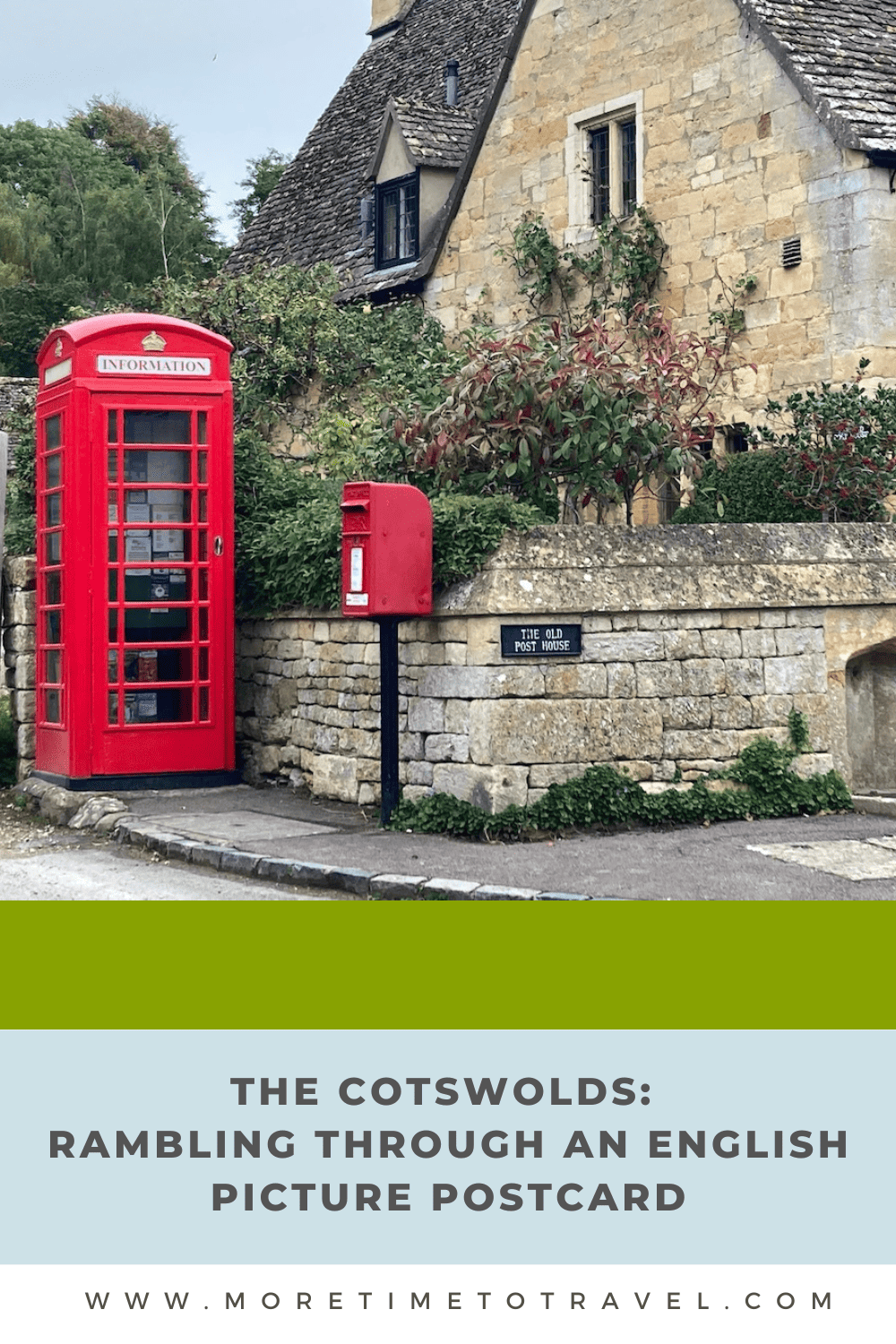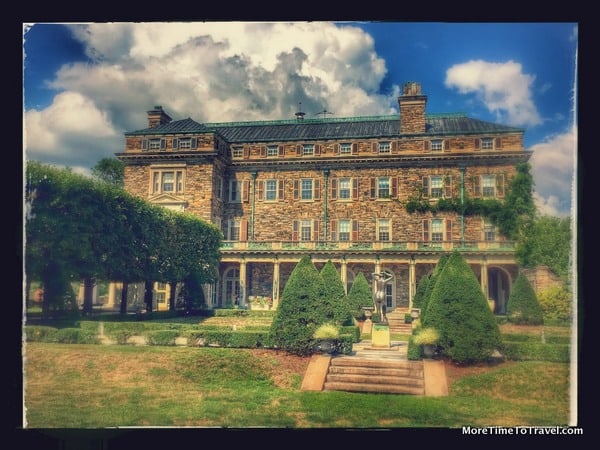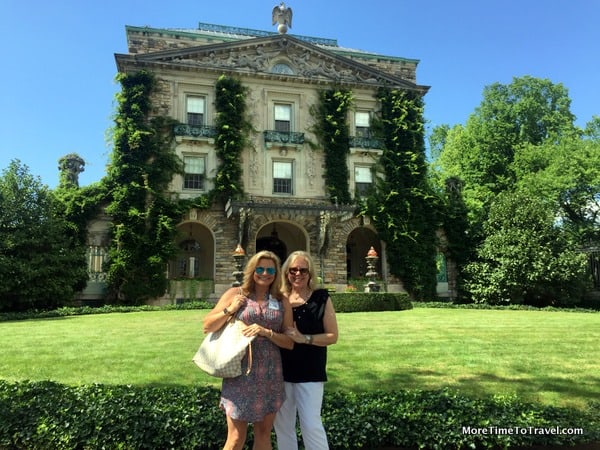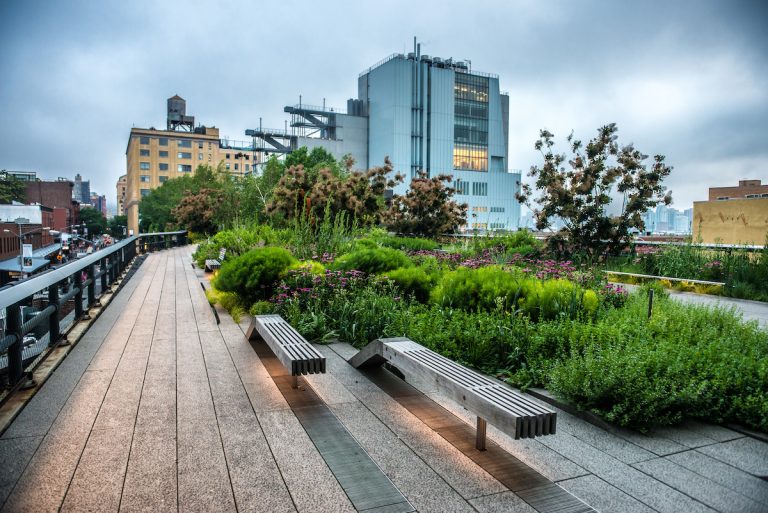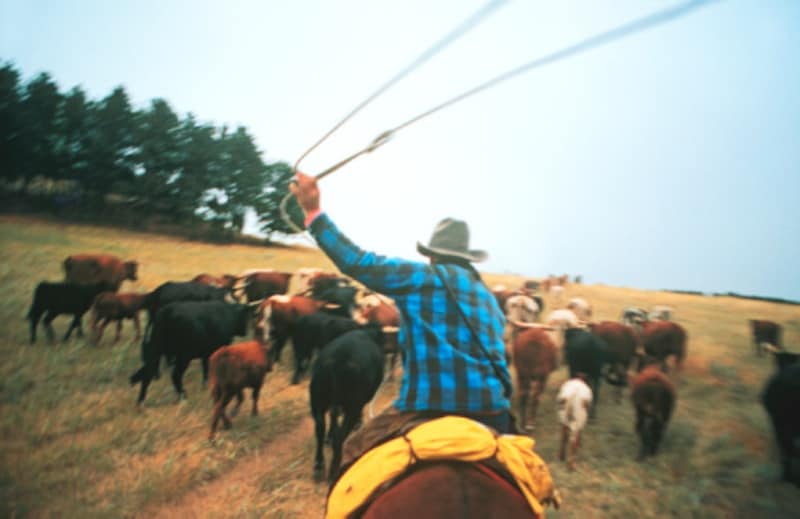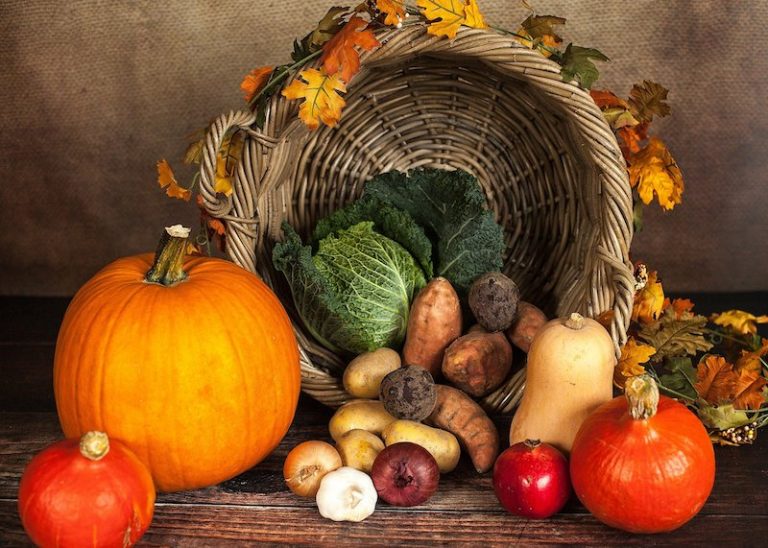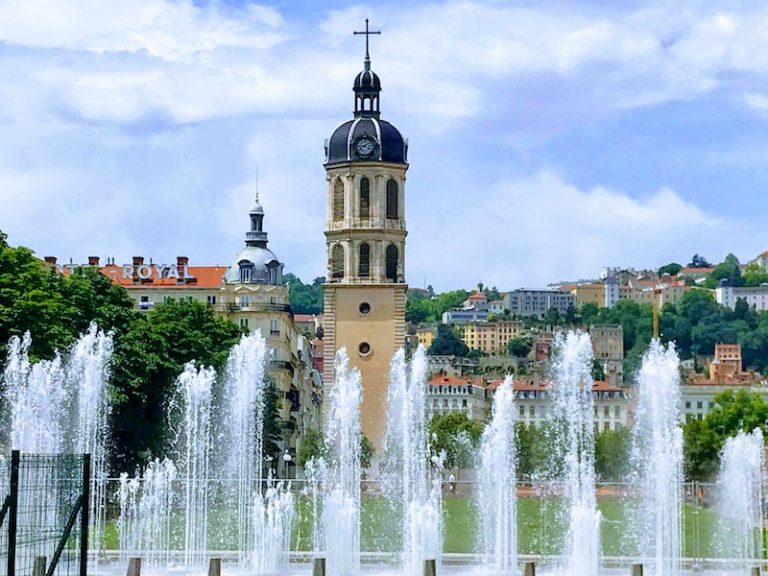The Cotswolds: Rambling Through An English Picture Postcard
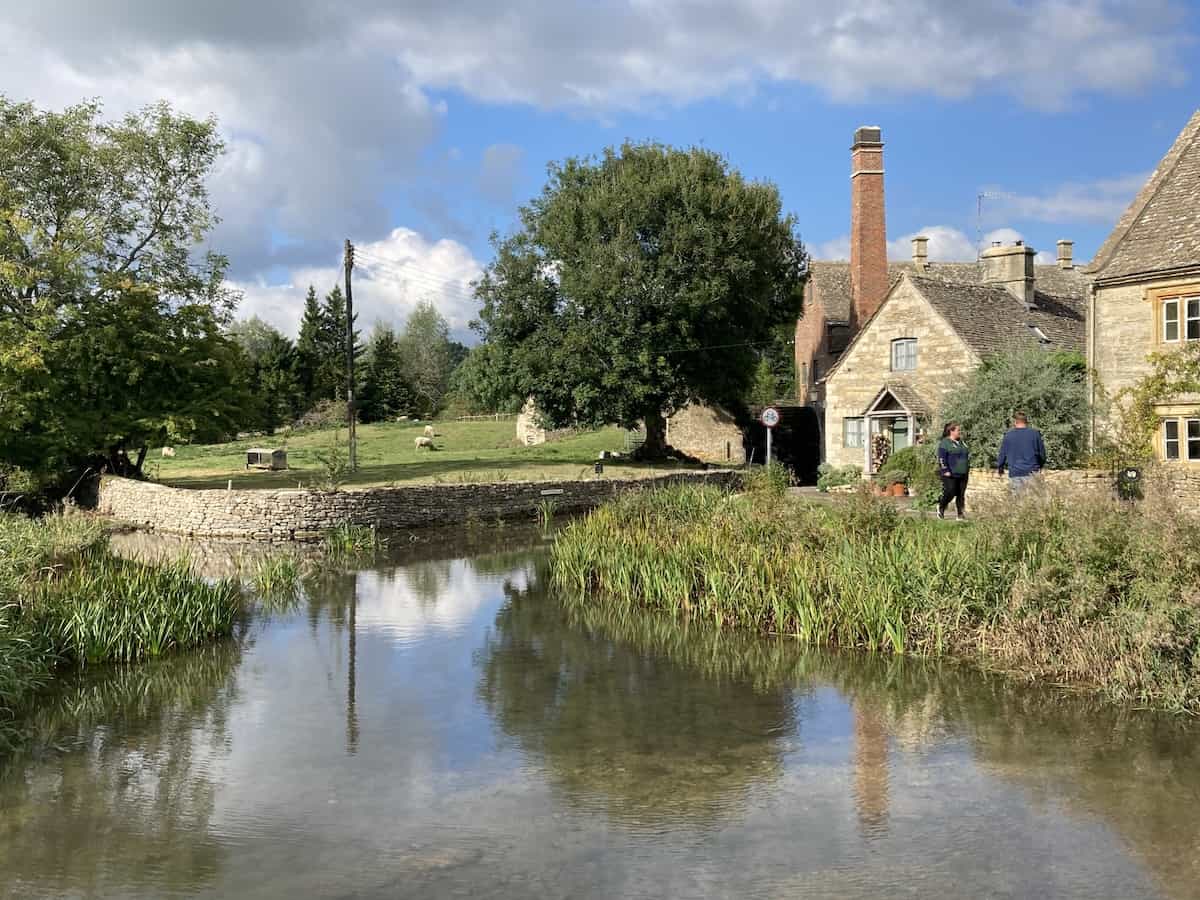
Guest contributor Ali Webb recounts a dreamy first-person visit to the magical world of the Cotswolds.
As a true aficionado of historical British murder mysteries, sometimes I daydream about what it would be like to actually step into the pages of the story.
From the first moment we arrived in the Cotswolds, I was transported to exactly that type of destination. Few places can compete with the almost magical allure of this quintessentially English destination.
At its heart lies limestone villages, stunning farmlands, ancient churches, and historic cozy pubs. Something about the Cotswolds drew us in and didn’t let go.
Where are the Cotswolds?
The Cotswolds covers a huge area—almost 800 square miles—and runs through five counties (Gloucestershire, Oxfordshire, Warwickshire, Wiltshire, and Worcestershire) in central-southwest England.
Each area has its its own identity, yet all exhibit those defining Cotswold features: the ‘wolds’—quaint English villages of honey-coloured stone; lively market towns; some of the country’s greatest palaces, castles, and country houses; and stone and rolling hills and the natural world in acclaimed reserves.
Perhaps most importantly, the setting offers abundant opportunities for a ramble (what we Yanks call a walk). The area includes 3,000 miles of footpaths and bridleways connecting ancient woodlands and wildflower meadows and is boarded by 4,000 miles of historic Cotswold stone walls that divide up the landscape.
But first, one has to get to the Cotswolds. We took a train from London to Moreton-in-Marsh where the train dropped us off. We had ordered a cab in advance from the hotel and were picked up without a hitch.
Settling in at The Lords of the Manor
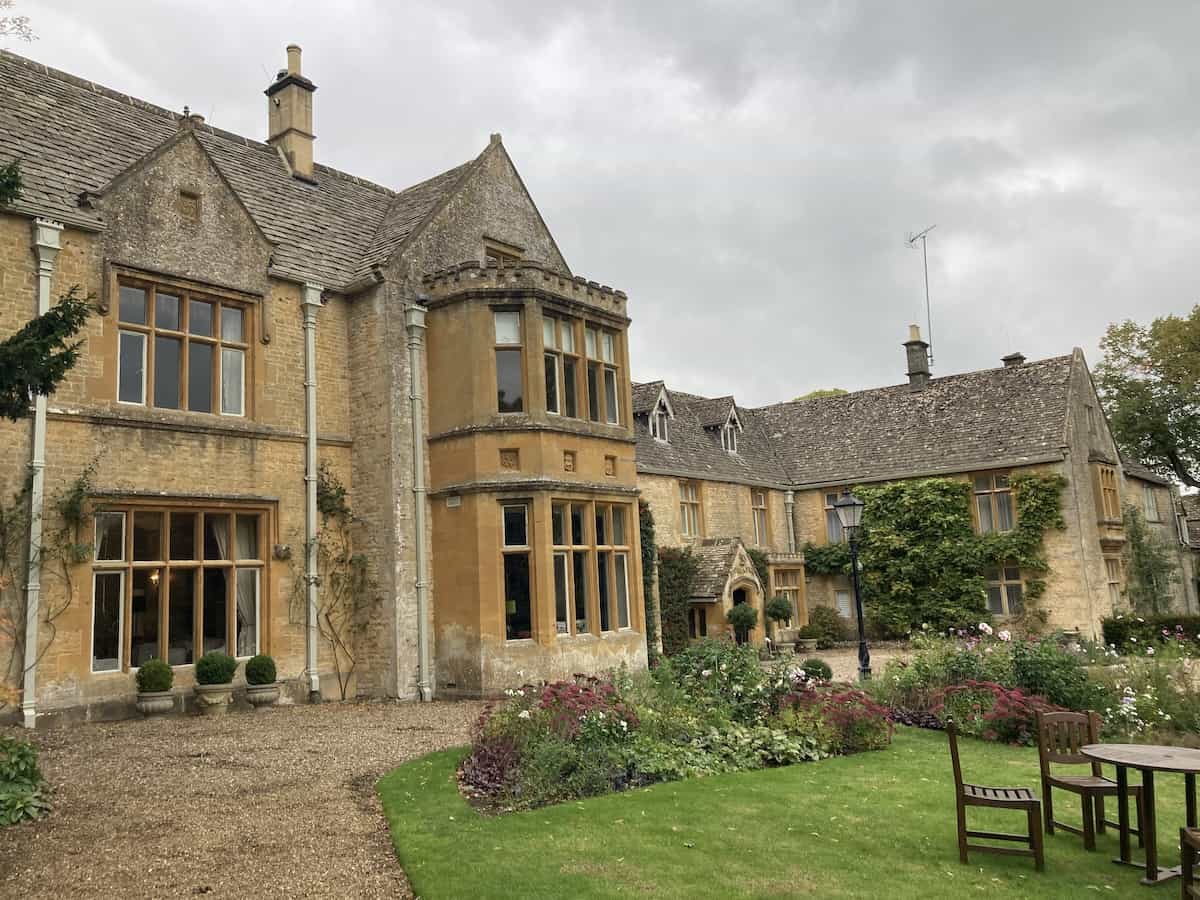
Our home base was The Lords of the Manor Hotel, one of those amazing accommodations you occasionally find on your travels.
Set on eight acres of lawns and grand gardens, the hotel dates back to 1649, and the honey-coloured stone of the manor instantly evokes nostalgia for delicious British pastimes—without compromising on modern comforts.
This is one of those hotels where they know your name and treat you with genuine warmth. We had lovely breakfasts and dinners at Lords, white tablecloths all the way. Each night before dinner, the friendly bartender offered tipples and conversation about the surrounding areas.
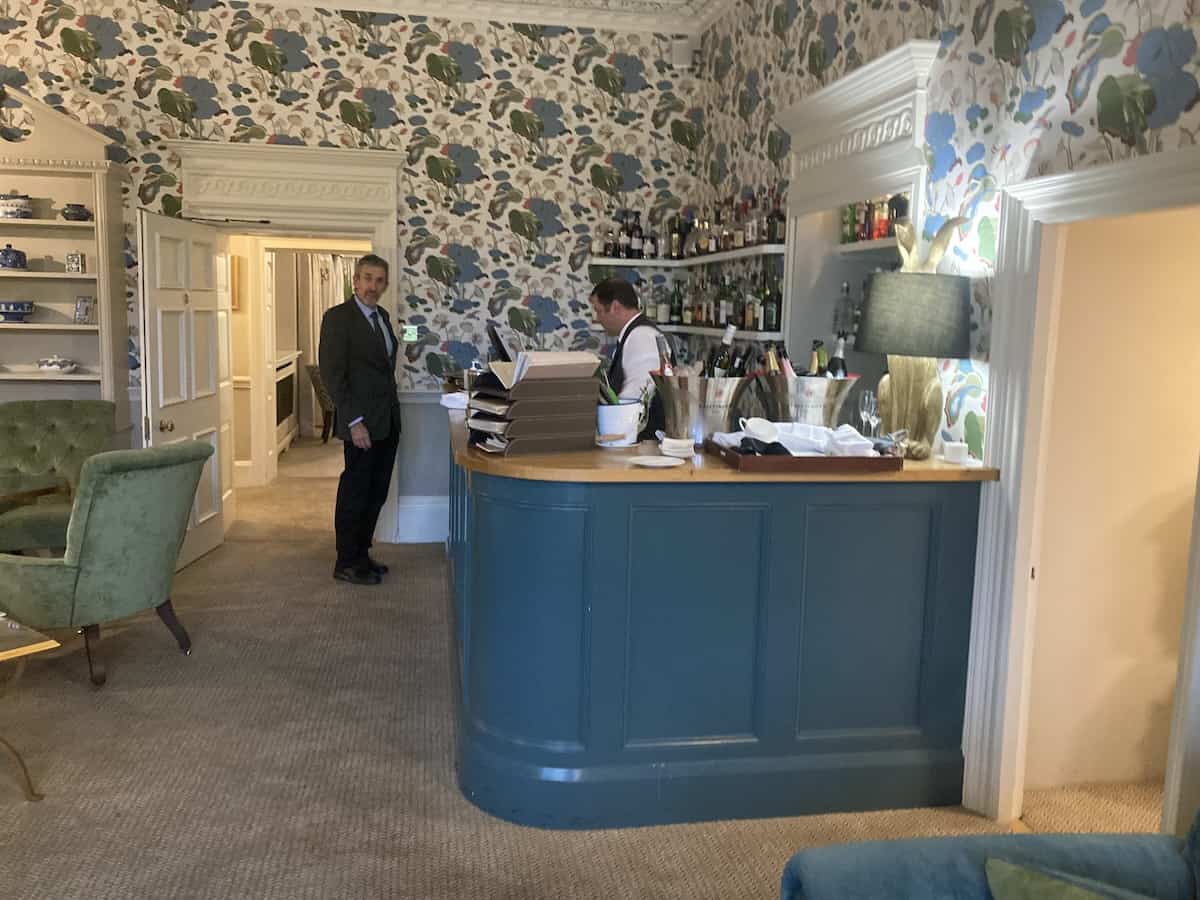
Rambling in the Cotswolds

We rambled two miles from Cheltenham-Upper Slaughter to Cheltenham-Lower Slaughter (Yes, the names can be somewhat confusing) and stopped for lunch at the so-cozy Slaughters Country Inn, which is both a pub and hotel.
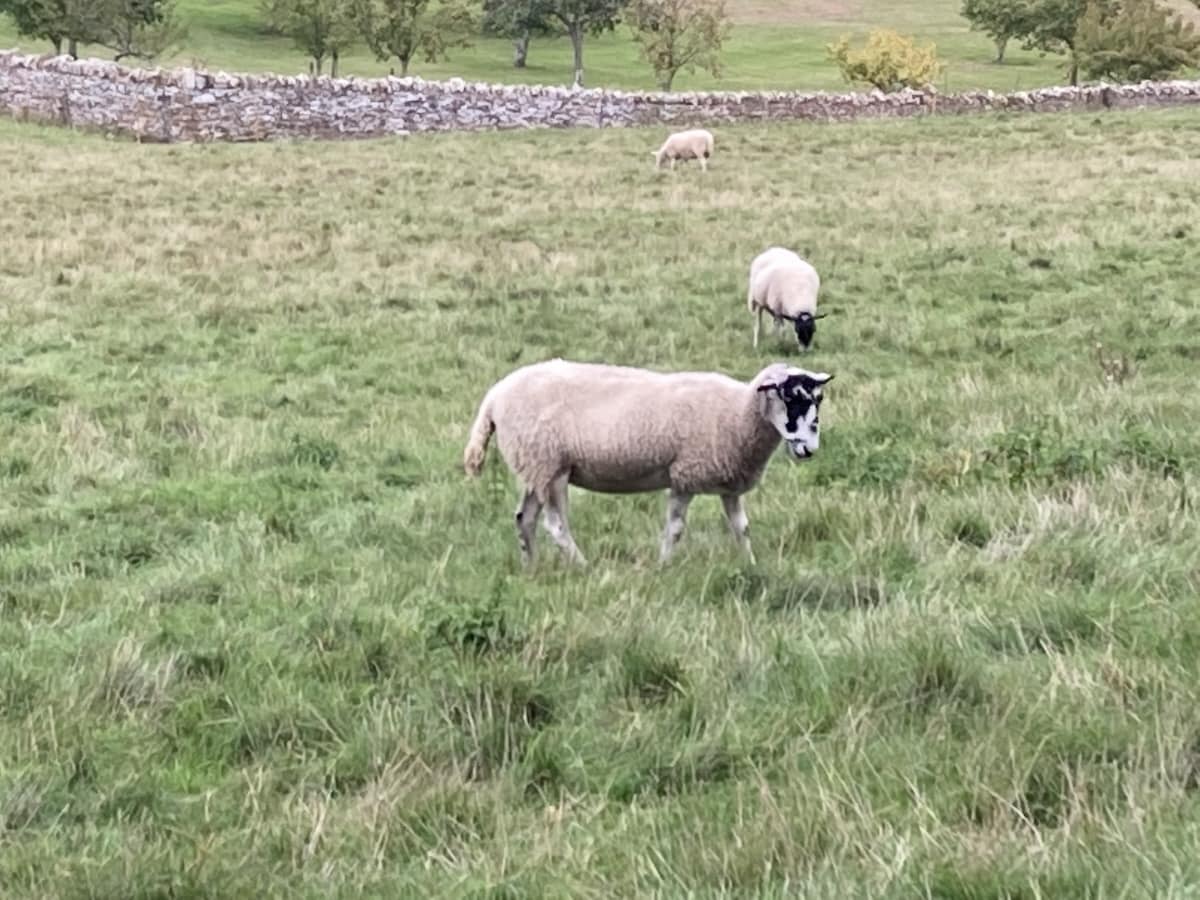
Bangers and mash and fish and chips made for the perfect lunch. Lower Slaughter is truly a postcard come to life, with a charming brook running through the village to the former grist mill, now a gift store.
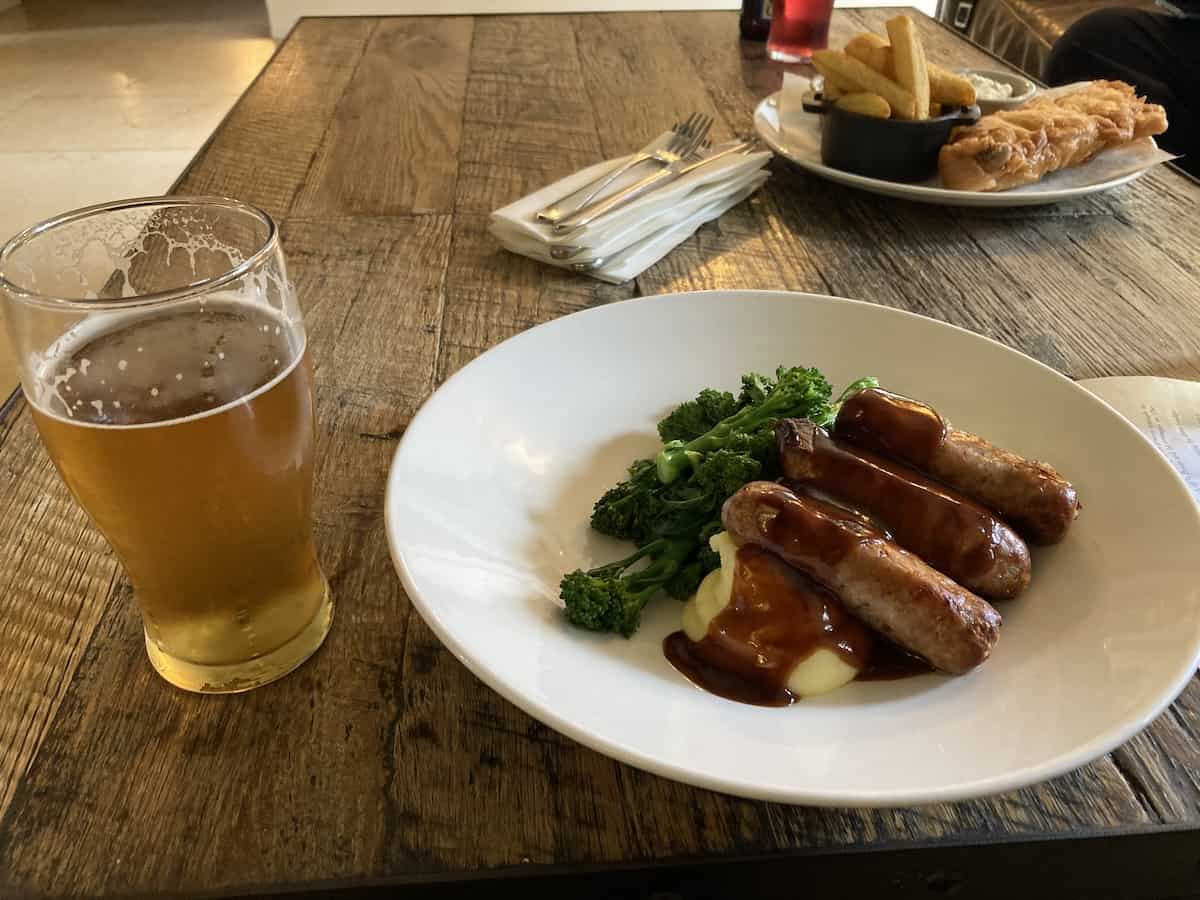
A private tour of the towns
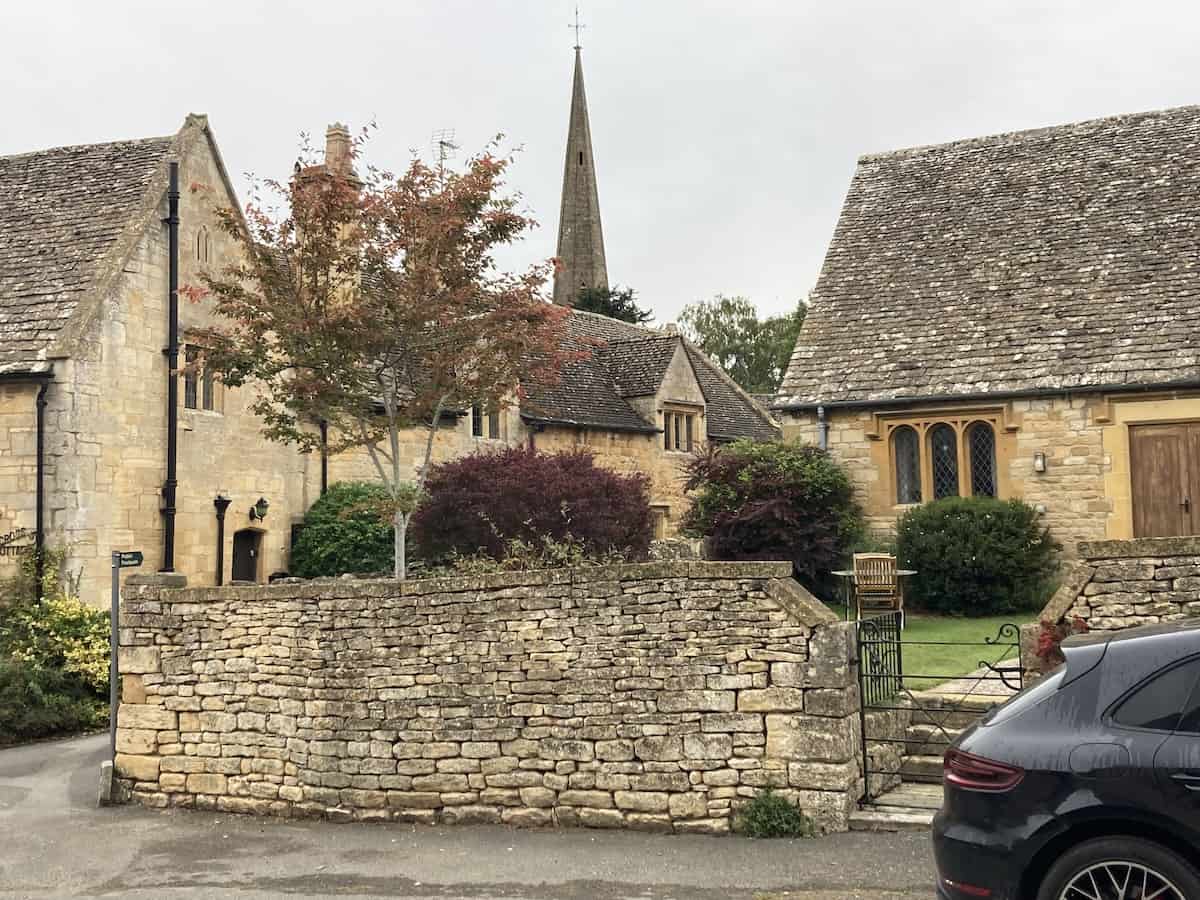
With limited time and a fear of left hand driving, we booked a private six-hour tour, Cotswolds Private Day Tour (through Viator), in order to see a bit more of the region. Our driver and tour guide host was a wonderful young man, a lawyer by trade helping out with the family tour business that day.
I don’t think you can make a mistake in visiting any collection of Cotswolds’ towns and villages. On this cloudy day, we visited Stow-on-the-wold, Snowhill, Broadway and Bourton-on-the-Water, among other postcard perfect spots.
A stop at Sudeley Castle & Gardens
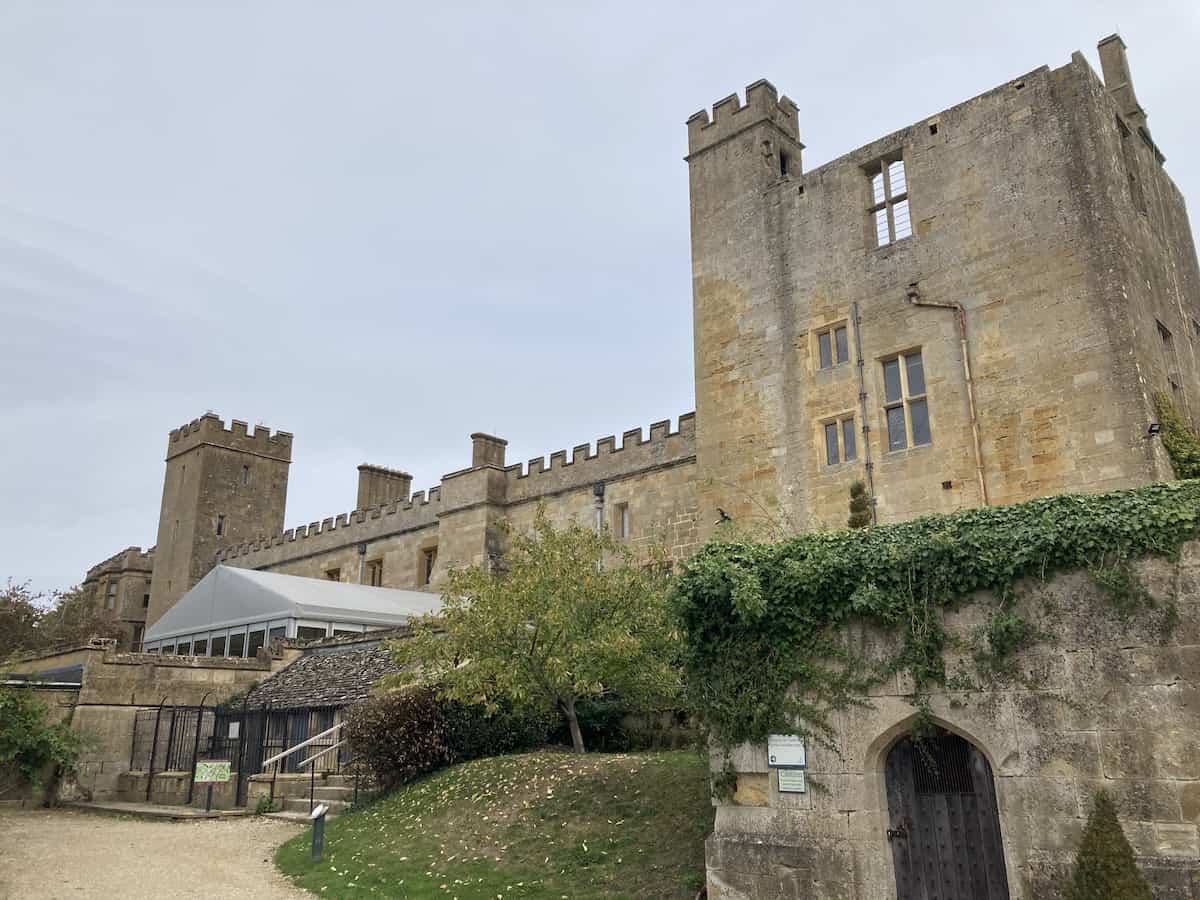
Our customized itinerary also included a visit to a castle. After all, no English tour would be complete without a castle visit.
Sudeley Castle remains the only private castle in England to have a queen buried within the grounds, Queen Katherine Parr, the last and surviving wife of King Henry VIII who lived and died in the castle.
The castle was rich with history, with Henry himself, Anne Boleyn, Lady Jane Grey, Queen Elizabeth I, and Richard III all playing a part in Sudeley’s story.
Derelict for nearly 200 years, Sudeley was rescued in 1837 by the wealthy Worcester glove-makers, brothers John and William Dent, who began an ambitious restoration. Their descendants continued the work, which is evident in the gardens and exhibitions at Sudeley today.
Sudeley Castle & Gardens is now the home of Elizabeth, Lady Ashcombe, and her son, daughter, and their families. Walking the halls, I had the feeling I might turn a corner and find myself surrounded by the pomp and circumstance as would a royal visitor. I certainly wasn’t dressed for that in my sneakers and slacks.
Other inspiring Cotswold communities
The surrounding Cotswolds communities provided their own charm to the tour. Stow-on-the-Wold is an idyllic town, composed of the honey-colored stone buildings that seemed to whisper tales of centuries gone by.
As a diehard Tolkien fan, a mandatory stop was made at St. Edward’s Church’s north door. The small door, flanked by two ancient yew trees is rumored to have sparked J. R. R. Tolkien’s inspiration for the “Doors of Durin,” the west gate of Moria that appears in a scene in the The Lord of the Rings: The Fellowship of the Ring.
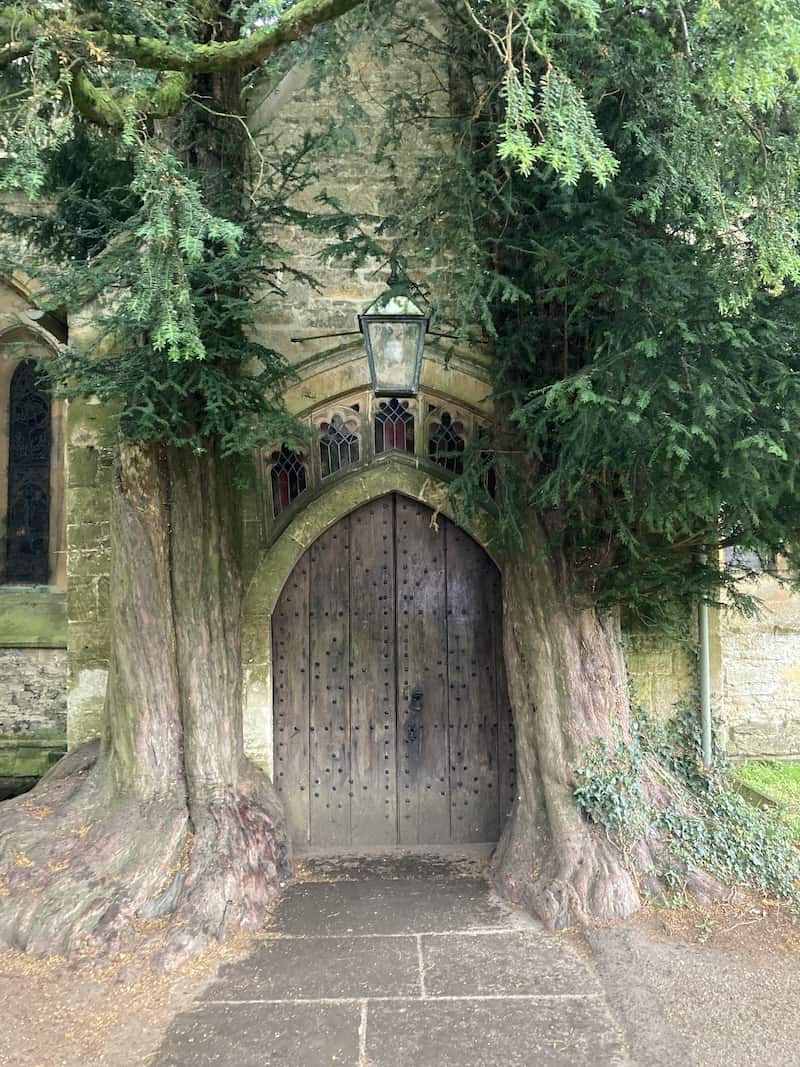
Broadway, a neighboring village, boasts the Broadway Tower, which provides panoramic views of the surrounding countryside. We then traveled to Snowshill, a quaint hamlet known for its rustic charm. A quick stop at the Snowshill Arms, an age-old pub, provided me a welcome pint of hard cider. A short stroll away, the St. Barnabas Church stood where centuries-old architecture whispered secrets of faith and resilience. Inside the church, the play of light through stained glass windows painted a kaleidoscope of colors on the timeworn pews.
Final stops included Tewkesbury, a town where Tewkesbury Abbey stood watch and Bourton-on-the-Water, often hailed as the “Venice of the Cotswolds.” There, stone bridges span the River Windrush, perfect for strolling.
Drawn back to the Cotswolds
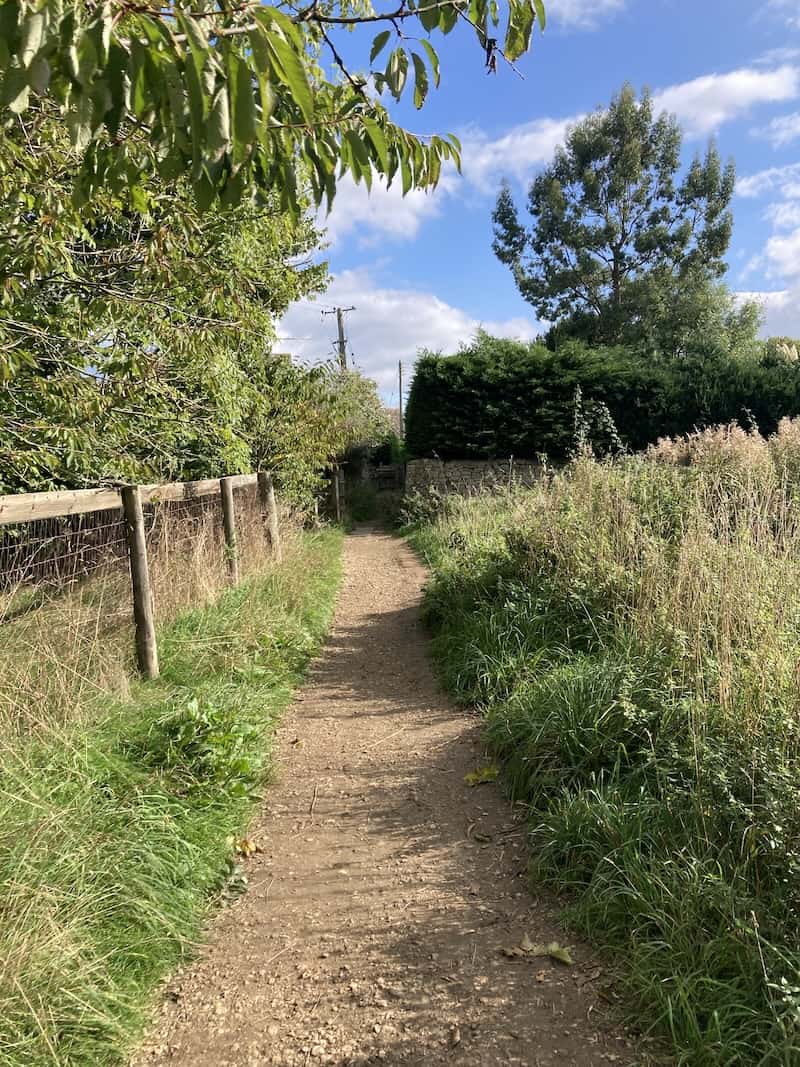
On my next trip, I’m going to plan my visit around a multiple day ramble along the Cotswold Way, a 102-mile walking path.
I will wander in the prettiest of villages and see more historic sites than we had time for on this trip. Ahh, to ramble in such a magical place…
All photo credits: Keith Kehlbeck
*Ali Webb, PhD is adjunct faculty at the University of Michigan and Columbia University. Her long career in strategic communications offered many opportunities for domestic and foreign travel. She has written a bi-monthly Sunday travel column, The Indulgent Traveler, for a Gannett daily in Michigan and now contributes to other travel websites.
IF YOU GO
- The Cotswolds is about 60 miles from Winchester, another historic city. Read about interesting things to do in Winchester.
Save to Pinterest!!